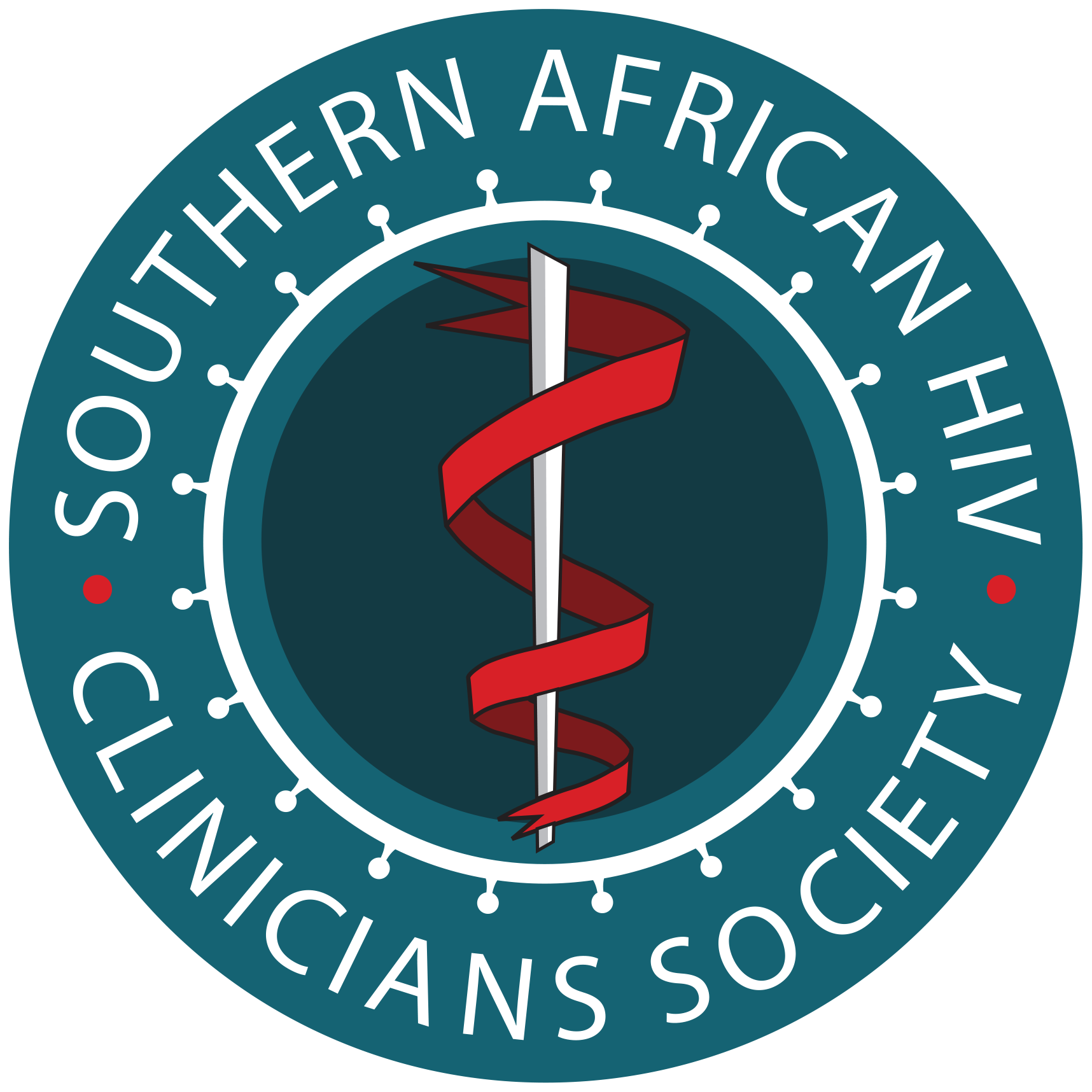ART Guidelines
References

 Key points
Key points - In ART-naïve patients, the preferred initial regimen is 3TC (300 mg) or (FTC 200 mg) + TDF (300 mg) + DTG (50 mg) daily – available as a once-daily, one-tablet FDC.
- In patients with renal impairment (eGFR < 50 ml/min/1.73m2), the alternative regimen is 3TC + ABC + DTG.
Preferred initial antiretroviral therapy regimen
The preferred initial regimen for previously untreated patients is summarised in Table 11.
| TABLE 11: Preferred initial ART regimen for previously untreated patients. | ||
| First drug | Second drug | Third drug |
|---|---|---|
| TDF 300 mg daily | 3TC 300 mg daily; or FTC 200 mg daily | DTG 50 mg daily |
| 3TC, lamivudine; DTG, dolutegravir; FTC, emtricitabine; TDF, tenofovir | ||
There are no significant interactions between NRTIs and rifampicin (RIF); however, InSTIs, NNRTIs, PIs and maraviroc (MVC) all exhibit drug interactions with RIF. DTG can be used in patients receiving RIF, but a dose adjustment to 50mg twice daily until two weeks after stopping RIF is advised. 88 There is evidence from a Phase 2 trial and an observational cohort that standard DTG dosing with RIF (50mg daily) achieves similar virological suppression to dose adjustment in patients on first-line regimens (see module 17). Other drugdrug interactions with DTG are discussed in module 3 and module 17.
Patients should be advised to take TLD in the morning given the potential side-effect of insomnia, but if it is more convenient for the patient to take at night this will be tolerated in most patients.
Reasons for this preferred regimen are:
- This combination is available as a once-daily, onetablet FDC from several suppliers.
- TDF is preferred over ABC because the risk of hypersensitivity reactions with ABC (HLA-B*5701 testing is not widely available in SA); studies show lower VL suppression with ABC when baseline VL is > 100 000 copies/mL (although not confirmed in a meta-analysis); 13 and lower cost
- 3TC and FTC are regarded as interchangeable in terms of efficacy and safety.
- DTG is preferred over RAL and RPV because of its higher resistance barrier. 89 RAL also requires twice daily dosing and is not co-formulated in FDC. DTG is preferred over EFV and PIs because superior efficacy and tolerability were demonstrated in first-line clinical trials. 19, 20
- There is an increasing prevalence of pre-treatment resistance to NNRTIs in South Africa (> 10% in some studies) which may compromise efficacy of EFV-based regimens. 90
Alternatives regimens for the previously untreated patient are summarised in Table 12.. We only recommend an NNRTI regimen in patients who do not tolerate DTG.
| TABLE 12: Recommended alternative initial antiretroviral therapy regimens in specific clinical situations where TDF + 3TC (or FTC) + DTG cannot be used. | |
| Scenario | Alternative regimen |
|---|---|
| Renal impairment at baseline (eGFR < 50 mL/min/1.73m2) | ABC + 3TC + DTG† or TAF + 3TC + DTG† if eGFR 30-50 mL/min/1.73m2 |
| Renal impairment develops due to TDF | ABC + 3TC + DTG |
| Patient is intolerant of DTG side-effects | TDF + 3TC (or FTC) + EFV, or TDF + 3TC (or FTC) + RPV |
| Pure red cell aplasia develops due to 3TC/FTC | TDF + DTG (can consider adding AZT when Hb has recovered) (or RPV + DTG, provided VL is suppressed) |
| 3TC, lamivudine; ABC, abacavir; AZT, zidovudine; CrCl, creatinine clearance rate; DTG, dolutegravir; EFV, efavirenz; FTC, emtricitabine; Hb, haemoglobin; RPV, rilpivirine; TDF, tenofovir; VL, viral load. † In such patients, if renal function subsequently improves (eGFR > 50 mL/min/1.73m2), then they can be switched to TDF + 3TC + DTG with creatinine monitoring. | |
Key points about some of these alternative regimens can be found in Table 13
| TABLE 13: Alternative initial ART regimens for the previously untreated patient if DTG or TDF not tolerated | |
| Regimen | Notes |
|---|---|
| TDF + 3TC (or FTC) + EFV |
|
| TDF + 3TC (OR FTC) + RPV |
|
| ABC + 3TC + DTG |
|
| 3TC, lamivudine; ABC, abacavir; DTG, dolutegravir; EFV, efavirenz; FTC, emtricitabine; LTFU, loss to follow-up; RIF, rifampicin; RPV, rilpivirine; TDF, tenofovir; VL, viral load. | |
Dolutegravir + lamivudine was shown to have noninferior efficacy to a three-drug regimen in RCTs. 93 However, these trials did not include patients with a VL > 500 000 copies/mL. Furthermore, virological suppression was lower in patients with a CD4+ count ≤ 200 cells/µL. Therefore, we do not routinely recommend this regimen unless neither TDF nor ABC can be used. Importantly, hepatitis B must be excluded before considering this regimen as patients with hepatitis B must receive TDF + 3TC (or FTC) to prevent rapid emergence of 3TC/FTC resistance.

In South Africa, many patients who present as newly diagnosed and report no prior treatment exposure have actually been on treatment before. Take a full, non-judgemental history from every “newly diagnosed” patient to ascertain if they may be returning to care after treatment interruption as this may impact management plans.
